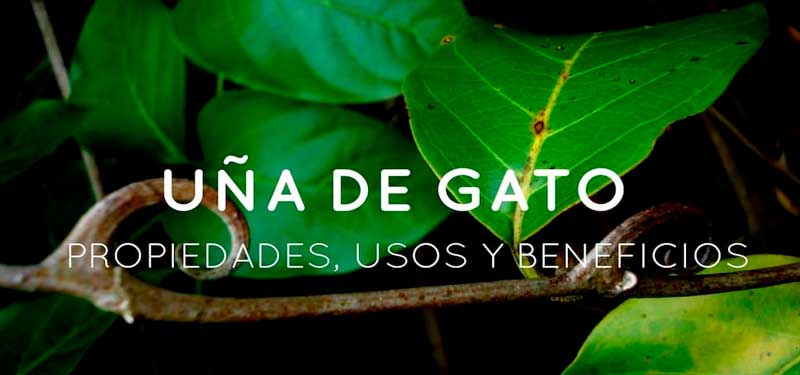Subtotal: S/. 18,00
By multiple studies and clinical experiences done to Cat’s Claw, it has been shown the importance of its anti-inflammatory activity, its great capacity of stimulating and strengthening our immune system.
These qualities grant it an extremely diverse range of possibilities of use in different treatments, with the added advantage that it is a plant that practically lacks toxicity and can therefore be used with a lot of confidence.
Description
Uncaria tomentosa (Willd) DC and Uncaria guianensis (Aubl.) Gmel, are the two species of the Rubiaceae family used in traditional medicine for possessing very similar therapeutical characteristics and properties although, here, we refer to Uncaria tomentosa.
It is a liana (a vine) which can grow up to 20-30 m in longitude and in between 10-30 cm in stem diameter.
It’s also known as garabato, paraguayo, sparrowhawk nail, garabato Amarillo, garabato casha, etc.
It is distributed throughout the jungle of almost all of South America. In Peru it grows wild and cultivated in the low-lying Amazon region up to 800 mamsl.
Clinical experience and statistical studies on Cat’s Claw
Some of the bark’s uses, as described by traditional medicine, are related to the treatment of snake bites (topical use), rheumatism, biliary colics, inflammation of the prostate, venereal diseases, also used as an anticarncinogenic and contraceptive, especially in women.
In 1994, in IPIFA, a statistical study was carried out with the revision of 23,271 clinical histories in patients treated in the Institute between 1993 and 1994. Of this number, 3,667 (15.76%) were treated with Uncaria tomentosa.
This study, carried out in 1994, has the limitations typical of the time, apart from which they worked with clinical histories in which Uncaria tomentosa was the only plant used or which formed an integral part in the treatment of these patients. Even though, a few interesting conclusions could be obtained.
Cat’s claw and neoplastic illnesses
Neoplastic illnesses (36%), as can be seen, formed at that time a greater percentage of patients within those treated with Cat’s Claw, fact which maintains until now.
It is important to point out that, in this type of pathology, this treatment complements oncological treatment, it does not substitute it, with which, generally, important benefits are obtained for these patients: within which we highlight those in which the intensity of the undesired effects, which usually present themselves with greater or lesser intensity during the course of the application of chemotherapy, radiotherapy, etc., are diminished.
In many patients the life expectancy is improved (prolonged) and generally with a better quality of life.
It is necessary to have a dietary regime in which protein-of-animal-origin consumption must be drastically reduced (at least by 80%) and purifying plants, which favour the functioning of the liver and gall bladder, taken.
Effect on rheumatic diseases
Rheumatic diseases (26%) are the ones which respond best to the treatment of this bark, especially in cases of rheumatoid arthritis in which an important remission of the inflammation and pain is obtained with, in some cases, functional recuperation of the affected joint.
It has an important quality where it does not irritate the gastric mucosa which means it can be used in patients with gastritis who cannot tolerate any other treatment, apart from which it is able to be used in doses and for long periods of time with no risk.
Cat’s caw anti-allergic effect
Allergies (8%), at present a greater percentage of these patients, which present an important inflammatory component upon the mucosa in the respiratory tracts, will benefit with the proven anti-inflammatory action of Cat’s Claw.
Taking Cat’s Claw improves medical charts by diminishing the frequency and intensity of the crisis, in the cases of bronchial asthma and hay fever which are the most frequent allergies presented in medical charts in our environment.
Effect on the immune system
In cases of patients with AIDS (2%) the use of Cat’s Claw in high doses, with the expectation of helping specialized treatments, contribute an important anti-inflammatory action and capacity of strengthening the body’s immune system.
In Others (28%) a wide group of illnesses were considered which proceed with an inflammatory component and/or depression of the immune system, this group of patients benefited from the use of Cat’s Claw accelerating the process of improvement or cure of their medical charts, reducing the time of treatment.
Presentation of Cat’s Claw
As can be seen the potential use of this medical plant is wide and very important, even though Cat’s Claw is one of the most investigated medical plants at present, especially by Austrian, German, Italian, Japanese and Peruvian investigators, it remains pending to carry out and diffuse these clinical studies in their distinct phases that faithfully confirm the observed benefits and descriptions of its professional use.
In Peru it is one of the most used and commercialized medical plants and is presented in the form of dry bark to be prepared in cooking and in form of hydroalcoholic extracts, liophilistates, etc.







